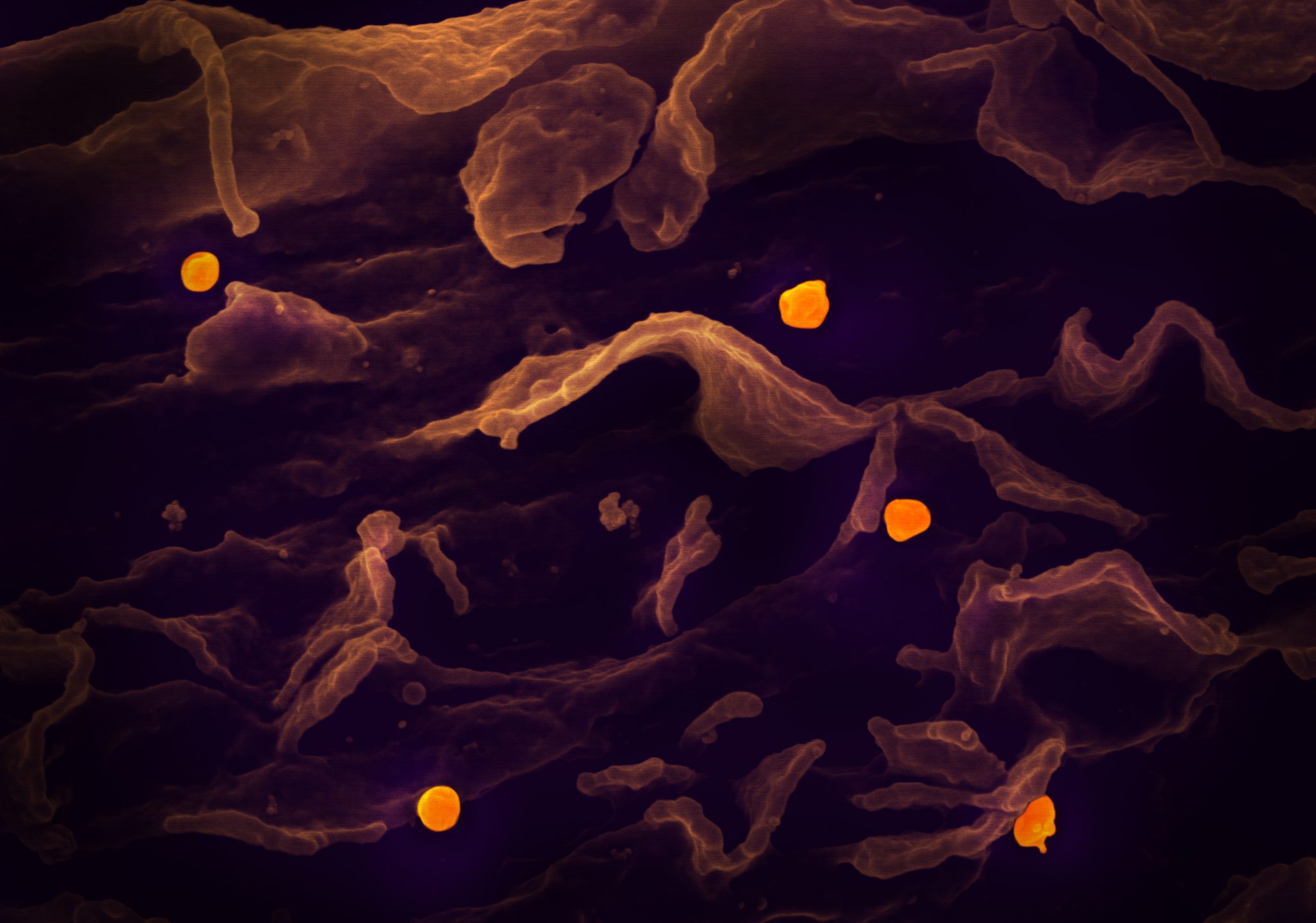Follow us on Google News (click on ☆)
Most vaccine candidates target the virus's surface proteins necessary for its entry into human cells. To develop its new vaccine, the VRI team (Vaccine Research Institute from ANRS MIE/Inserm) relied on the central role played by antigen-presenting cells (APCs) in establishing protective responses. The vaccine candidate, named CD40.NiV, carries specific parts of surface proteins from the NiV-B strain, the Bangladesh strain.

Scanning electron micrograph showing the Nipah virus (yellow) budding from a cell surface.
© National Institute of Allergy and Infectious Diseases, NIH
Following Nipah virus infection in animals, CD40.NiV demonstrated immunogenicity, neutralization, and complete protection, a significant step towards the clinical development of a vaccine against the infection. The results of this work were recently published in the March 2024 issue of Cell Reports Medicine.
The Nipah virus (NiV) is a zoonotic virus, meaning it is transmitted from animals to humans. However, it can also be transmitted through contaminated food or directly between individuals. The clinical picture can range from asymptomatic infection to fatal encephalitis and acute respiratory infection. First identified in 1999 in Malaysia, the virus has since spread regularly by outbreaks in Bangladesh and India. The mortality rate associated with these epidemic outbreaks is estimated to be between 75 and 90%.
The virus has recently been listed on the WHO's priority list of emerging pathogens. To date, no treatment or approved vaccine exists. Many vaccine candidates are under investigation or development. Most target proteins on the virus's surface, the G and F proteins, necessary for its entry into the human cell and its propagation through the body.
Researchers from INSERM and UPEC stand out for their original approach involving antigen-presenting cells (APCs), particularly dendritic cells, which play a significant role in the immune response. In constructing the CD40.NiV vaccine, specific parts (or epitopes) of the G, F, and N proteins of the Nipah virus from the Bangladesh strain (NiV-B) were attached to an antibody recognizing the CD40 receptors on the surface of dendritic cells. The epitopes are thus directly presented to the immune system's cells.
The immunogenicity (ability to induce an immune response) of the vaccine was evaluated in mice and non-human primates after two administrations of the CD40.NiV vaccine (a so-called prime-boost strategy). Just 10 days after the first vaccination with CD40.NiV (prime), the production of specific NiV IgG and IgA antibodies, as well as neutralizing antibodies (special antibodies that prevent infection by blocking the entry of the virus into target cells), was observed.
The neutralizing antibody response is maintained for at least 100 days after the peak of the immune response. The team also showed that antibodies induced against NiV neutralize different NiV strains (Malaysia, Cambodia) and the Hendra virus (known as cross-neutralizing immunity), an infectious agent transmitted by bats causing highly fatal infections in horses and humans.
To ensure the vaccine's effectiveness, the animals were infected with the NiV virus 60 days after the second CD40.NiV injection (boost). The protection was total.
This preclinical study demonstrated that the CD40.NiV vaccine candidate confers protection against the development of the Nipah virus, with a survival rate of 100% of immunized animals until the end of the study, which is 28 days post-infection. The absence of significant clinical signs or virus replication suggests that the vaccine candidate provides "sterilizing immunity," i.e., it can prevent the disease and its transmission.
Overall, the results obtained with CD40.NiV are very promising for combating NiV infection and represent a significant step towards the clinical development of a vaccine against this virus.